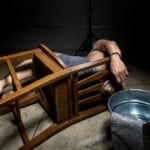 Weird Stuff
Weird Stuff  Weird Stuff
Weird Stuff  Our World
Our World 10 Ways Your Christmas Tree Is More Lit Than You Think
 Movies and TV
Movies and TV The 10 Coolest Stars to Set Sail on The Love Boat
 History
History 10 Things You Didn’t Know About the American National Anthem
 Technology
Technology Top 10 Everyday Tech Buzzwords That Hide a Darker Past
 Humans
Humans 10 Everyday Human Behaviors That Are Actually Survival Instincts
 Animals
Animals 10 Animals That Humiliated and Harmed Historical Leaders
 History
History 10 Most Influential Protests in Modern History
 Creepy
Creepy 10 More Representations of Death from Myth, Legend, and Folktale
 Technology
Technology 10 Scientific Breakthroughs of 2025 That’ll Change Everything
 Weird Stuff
Weird Stuff Ten Bizarre Facts About The Doge Meme
 Our World
Our World 10 Ways Your Christmas Tree Is More Lit Than You Think
 Movies and TV
Movies and TV The 10 Coolest Stars to Set Sail on The Love Boat
Who's Behind Listverse?

Jamie Frater
Head Editor
Jamie founded Listverse due to an insatiable desire to share fascinating, obscure, and bizarre facts. He has been a guest speaker on numerous national radio and television stations and is a five time published author.
More About Us History
History 10 Things You Didn’t Know About the American National Anthem
 Technology
Technology Top 10 Everyday Tech Buzzwords That Hide a Darker Past
 Humans
Humans 10 Everyday Human Behaviors That Are Actually Survival Instincts
 Animals
Animals 10 Animals That Humiliated and Harmed Historical Leaders
 History
History 10 Most Influential Protests in Modern History
 Creepy
Creepy 10 More Representations of Death from Myth, Legend, and Folktale
 Technology
Technology 10 Scientific Breakthroughs of 2025 That’ll Change Everything
10 Prisons That Are Not What We Expect
Supposedly, prisons are built for punishment and rehabilitation. Unfortunately, as we are about to find out, this is not always so. In corrupt countries, only poor prisoners end up getting punished. The richer ones just pay their way through, living in fully furnished, air-conditioned cells complete with televisions, cell phones, microwave ovens, Jacuzzis, and prostitutes.
Most of the time, these criminals are still able to run their businesses from prison. Or they can just set up a new venture—like manufacturing cocaine inside the prison.
However, while some of the correctional facilities on this list were deliberately made unconventional to promote rehabilitation among inmates, the majority (which are the corrupt ones) actually promote crime and make the inmates more hardened than when they arrived.
10 San Pedro Prison
Bolivia
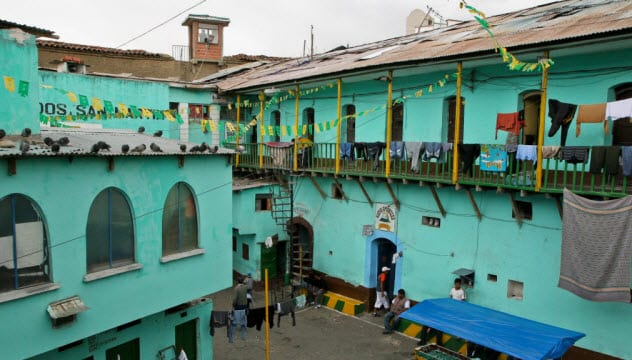
San Pedro prison in La Paz, Bolivia, is said to be one of the world’s strangest correctional facilities, and it is not hard to see why. The prison is run by the inmates. They operate restaurants, stores, and even a brothel and cocaine factory right inside the facility. The cocaine part is no surprise because many of the inmates were imprisoned for producing cocaine.
New prisoners are required to pay for their cell space. Otherwise, they will sleep outside the cells, which is as dangerous as sleeping on the streets. Richer inmates pay for a full cell and can even bring their families to live with them. Cells are categorized as three, four, or five stars, depending on their features. A cell costs around $1,100. Prisoners are also required to pay a $270 “prison fee.”
The guards at the prison are very corrupt and will often allow visitors to smuggle cocaine out of the prison in exchange for a bribe. Corrupt guards used to allow tourists to visit the prisons until the tours were banned by the government. Rusty Young wrote the 2003 book, Marching Powder, about his experience at the prison. He had bribed the guards to be illegally detained inside the facility for three months.[1]
9 San Pedro Sula Prison
Honduras
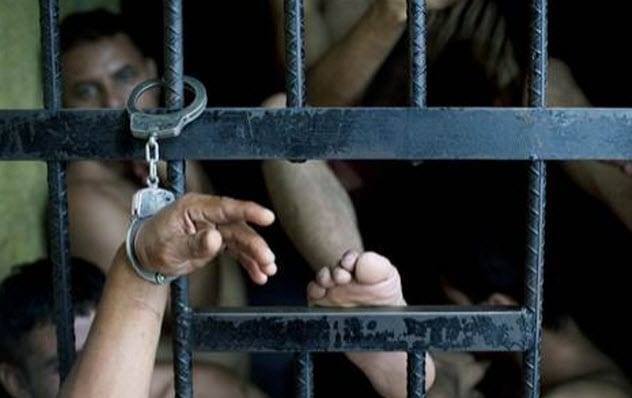
San Pedro Sula prison of Honduras and San Pedro prison of Bolivia share more than just a name. Both are overcrowded, dangerous, and run by the inmates. At San Pedro Sula prison, inmates own stores where they sell everything from fruits to shirts, alcohol, Coca-Cola, and iPhones. There is also a brothel. Some prisoners live in the facility with their families, and some keep livestock.
Inmates pay for their cells. A regular cell costs 1,000 lempiras ($41), while the most expensive, five-star cells cost 15,000 lempiras ($615) each. Inmates have keys to most of their cells and crowbars to break out without keys. However, they only intend to use them to escape in case of a fire.
Guards generally do not interfere in the prisoners’ affairs, and vice versa. There is even a linea de la muerte (“line of death”), a yellow line that separates the guards’ area from the prisoners’ area. Guards do not cross the line to the prisoners’ side of the facility, and the inmates never cross the line to the guards’ side of the prison. Other correctional facilities in Honduras have similar arrangements.
Prison fights are common and violent. During one clash, Mario Enriquez, the leader of the prison, and 13 of his lieutenants were murdered. Enriquez was accused of being cruel to the prisoners.[2]
However, the fight broke out after Enriquez increased prison fees and the price of goods. His body was cut into pieces and fed to his dog, which was later killed. The bodies of his lieutenants were burned. Guards only regained control of the prison three weeks later.
8 La Mesa Prison
Mexico
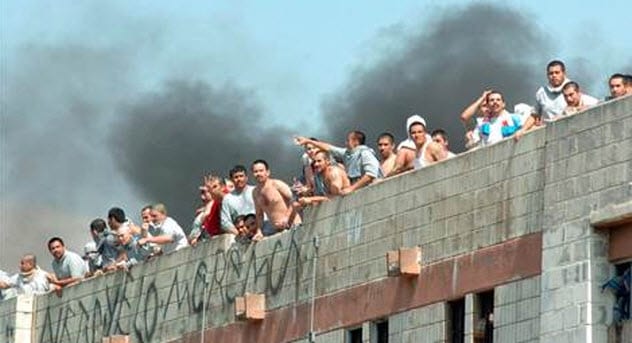
La Mesa prison was the most notorious prison in Mexico until it was demolished by President Vicente Fox. Located in Tijuana, the prison was a town on its own. At one time, people could not differentiate between the prison and Tijuana itself. This was why it was nicknamed El Pueblito (“The Little Town”). Trade conducted there amounted to £1.3 million a year.
Like similar gang-run prisons, La Mesa was filled with restaurants, brothels, and drugs. Inmates paid for their cells. Some even paid £16,000 to have a new, well-furnished cell built for them. The bathrooms of these cells were tiled and had Jacuzzis installed. Prisoners owned cell phones, DVD players, microwaves, computers, and air conditioners.
Prison guards were weak and kept at bay with threats and bribes. Richer prisoners would usually move in with their families, maids, and cooks. The crime bosses even arrived with bodyguards. However, all 6,700 inmates were moved to other prisons after the facility was demolished.[3]
7 Bastoy Prison
Norway
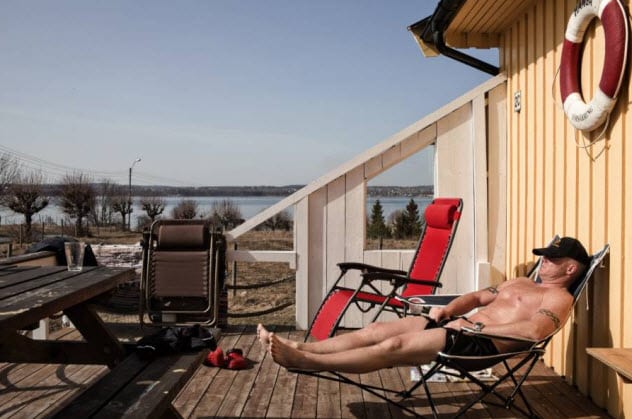
Bastoy Prison is one of the coolest correctional facilities out there. It is even said to be the “world’s nicest prison.” Over there, inmates don’t live in cells but in houses. Every prisoner has his own room, although they often share a kitchen. Inmates also receive $90 every month as an allowance and can earn more money by taking jobs inside the facility.
Prisoners receive one meal a day and have to buy and cook any other meal. Only five guards remain overnight with the inmates, which include murderers and rapists. Only 16 percent of prisoners that leave Bastoy return to crime. This is just half of the 30 percent average recidivism rate in Norway. In other countries of the European Union, 70 percent return to crime.[4]
6 Acapulco Prison
Mexico
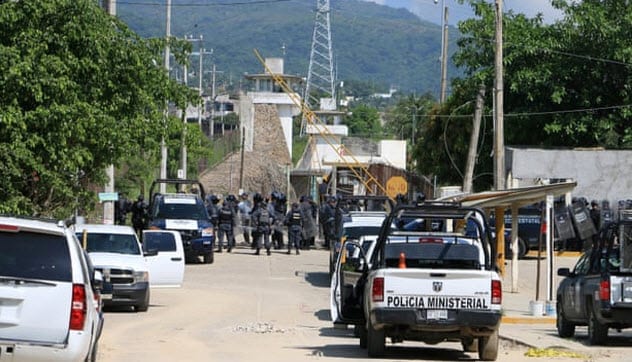
Acapulco has one of the most notorious prisons in Mexico. Located in Guerrero, one of the most lawless states in the country, Acapulco has been called one of the murder capitals of the world.
In 2017, 28 prisoners were killed during a bloody gang fight. Riot police officers were called in to quell the fight and found bodies scattered throughout the correctional facility.
In 2011, a surprise raid revealed the existence of two sacks of marijuana, two pet peacocks, 100 fighting cocks, flat-screen televisions, alcohol, and 19 prostitutes right inside the prison. Some female inmates were also found inside the male wing of the facility.
Police were not really surprised with what they found. Prisons in Mexico are underfunded, and inmates are usually expected to bring their own items. Prisoners will often bribe guards to smuggle illegal items into the facility. At another prison in the state of Sonora, a raid revealed the existence of an air conditioner, DVD player, and refrigerator inside a cell.[5]
5 Aranjuez Prison
Spain
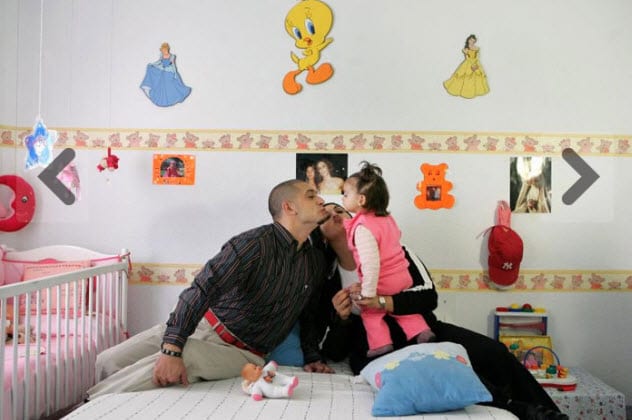
Aranjuez Prison was built for inmates and families with toddlers. The idea is to allow inmates to bond with their young children. Prisoners receive rooms with drawings of Disney characters on the walls, lots of toys, and baby cribs. There is also a nursery school inside the prison. The inmates and their children are allowed to roam freely around the facility until the doors are closed at night.
Some of the children do not like getting locked in. One toddler, Victor Manuel, whose parents met and got married in prison, often cried whenever a guard tried locking their room at night.
When their child turns three, inmates are required to give the child to a relative while they are returned to a regular prison. However, some inmates serve a good chunk of their sentence in the facility by getting their partners pregnant again before their child turns three.[6]
4 Association For Protection And Assistance To Convicts (APAC) Prison
Brazil
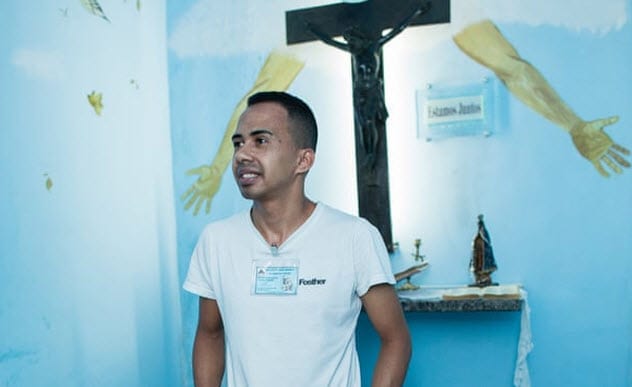
Association for Protection and Assistance to Convicts (APAC) prison is one of the most unusual correctional facilities in Brazil. Regular Brazilian prisons are run by gangs and will often leave inmates worse than when they arrived. However, APAC prison in Itauna, Minas Gerais, is focused on rehabilitating the prisoner. This is why the facility doesn’t have guards.
Inmates wear regular clothes as if they were in their homes. They also hold the keys to their cells and even the whole prison. They are called by their names instead of numbers. Some are even allowed to leave the prison one day a week to visit their families.
In exchange for the improved standard of living, inmates are required to work, study, and be well-behaved. Otherwise, they will be returned to the regular, crime-ridden prisons.[7]
3 Halden Prison
Norway
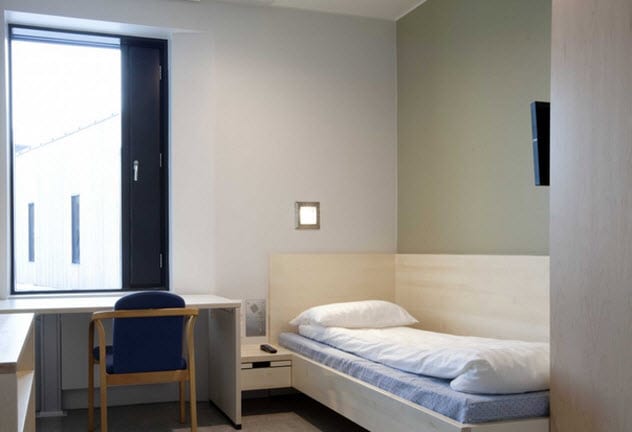
Halden Prison is another cool correctional facility from Norway. It is a maximum security prison even though it does not look like one. It has been called “the world’s most humane prison.” The cells are actually rooms, complete with a comfortable bed, desk, chair, and wardrobe. The rooms have windows, and the doors are made of wood instead of metal.
Inmates cook their meals and eat with metal cutlery instead of plastic utensils. They also have access to movies, video games, basketball courts, a gym, and a recording studio.
There are no guard towers in the prison, and the few guards do not have guns. Yet, the facility is filled with murderers, rapists, and drug smugglers. Inmates are expected to obey the rules of the prison and attend classes and counseling. If not, they will be sent to regular prison.[8]
2 Iwahig Prison And Penal Farm
Philippines
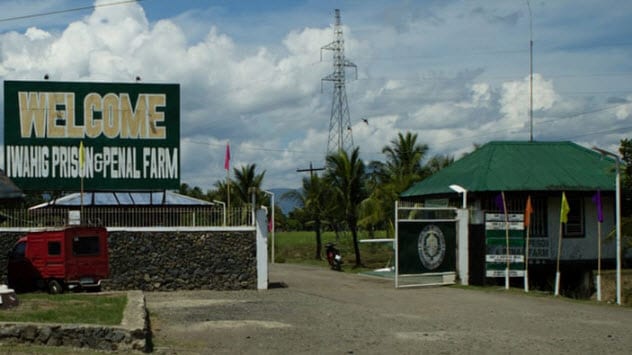
Iwahig Prison and Penal Farm is categorized as an “open-air jail” because it does not have walls. However, it covers 26,000 hectares, making it over two times the size of Paris. Inside the facility is the prison farm where all inmates work. They are taught a new trade during their stay, and some are even allowed to live with their families inside the prison.
There is only one guard at the gate. He allows visitors and tourists into the prison without bothering to search them. Visitors and tourists can buy snacks made and sold by the inmates.
While the facility is largely successful, there have been some escapes and allegations of corruption leveled against prison guards. In June 2014, seven prisoners escaped. The guards have also been accused of siphoning money earned by the prisoners as well as the entry fees paid by visiting tourists.[9]
1 Palmasola Prison
Bolivia

Palmasola prison is one of the most dangerous correctional facilities in Bolivia. The prison actually creates criminals instead of rehabilitating them. Police officers guarding the facility allow inmates to smuggle anything into the prison once they receive a bribe. Porters outside the facility help prisoners and visitors carry items inside.
Like other lawless prisons, inmates own items like televisions, smuggle in prostitutes, and pay for their cells. A personal cell sells for $3,000–$7,000 while a rented cell goes for $250 a month. A “shop” for an inmate-owned business sells for $13,000.
There are several restaurants and an Internet cafe inside Palmasola. Sarudo, the inmate leader of the prison who is also known as the “sheriff,” is even allowed to leave the prison whenever he wants to. Sarudo is a murderer.
Together, the corrupt police officers guarding the prison are estimated to earn $20,000 a day in bribes. A huge chunk of that money is sent to their superiors who had posted them to the prison.
Fights in the facility are also common and deadly. In August 2013, 32 prisoners were killed and another 70 were wounded in a violent prison fight that saw inmates use gas canisters as flamethrowers.[10]
Read about secret prisons you do not want to visit on 10 Secret Prisons Governments Are Hiding From Us and 10 Secret CIA Prisons You Do Not Want To Visit.
